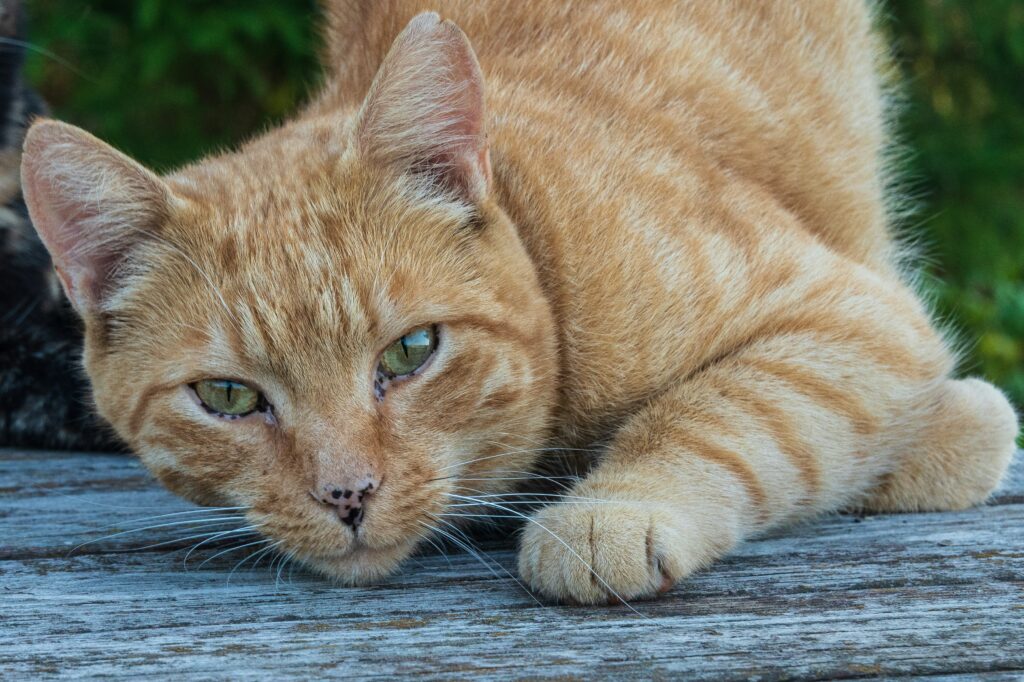Why the Right Cat Breed Matters for Families
When families consider getting a pet, cats often get unfairly labeled as independent or aloof. But many cat breeds actually thrive in high-energy households, enjoying the noise, attention, and companionship that a busy family can provide.
Some Cats Love the Chaos
Not all cats are solitary loungers. In fact, several breeds do especially well in family settings:
- They enjoy being around people, young and old
- They adapt well to a dynamic environment
- They’re often playful, affectionate, and patient
What to Look for in a Family Cat
Selecting the right breed for your household means paying attention to a few key traits:
- Temperament: Gentle, tolerant cats are safest and happiest with young children
- Grooming Needs: Consider how much daily or weekly grooming the breed requires
- Adaptability: Look for cats that won’t be stressed out by loud noises, guests, or changes in routine
Breeds like the Maine Coon or Ragdoll, for example, are celebrated not just for their looks—but for their easygoing nature in any family scenario.
Cats vs. Dogs in Family Life
While dogs are the go-to for many families, cats can offer just as much companionship with fewer demands:
- Cats don’t need walks, but still enjoy interactive playtime
- Some breeds form incredibly strong bonds with children
- They generally require less structured attention than dogs
It’s time to look past the outdated stereotype. With the right breed, a cat can be as loving, playful, and engaged as any family dog.
Whether you’re new to pet ownership or expanding your pack, knowing how a breed meshes with your lifestyle makes all the difference.
Maine Coon
If you’re looking for a feline that brings big energy without big drama, the Maine Coon fits the bill. These cats are built like tanks—large, solid, and surprisingly calm under pressure. Loud children? Unexpected guests? Vacuum cleaners? Not much rattles them.
Aside from their hardy nature, Maine Coons are famously affectionate in a low-key, dog-like way. They’ll follow you around the house, chirp instead of meow, and usually don’t mind a bit of rough play. That makes them a solid match for homes with kids. Smart and curious, they can even be taught tricks or to walk on a leash.
Patience, intelligence, and a sense of play—wrapped in a shaggy, majestic coat. The Maine Coon brings both presence and peace, which is a rare combo in the cat world.
Traits That Make a Cat Great for Families
When picking a cat for a family setting, especially one with children, don’t rely on cuteness alone. What really matters is how well the breed handles chaos, curiosity, and the occasional loud toddler.
First up: patience. Good family cats don’t mind being hugged a little too tightly or chased playfully down the hallway. Some breeds—like Ragdolls and British Shorthairs—tend to tolerate grabby hands and sudden kid energy without hissing or hiding.
Next is sociability. Cats that stress easily in noisy environments or need constant quiet probably won’t thrive in a busy home. Breeds like Burmese and Maine Coons enjoy being part of the action and won’t bolt at the sound of a dropped toy.
Grooming matters too, especially if you’ve got limited time. Some long-haired breeds like Maine Coons need regular brushing to keep mats away, while British Shorthairs and Abyssinians get by with minimal upkeep. Choose a coat that matches your schedule.
Finally, think about long-term health and lifespan. Generally, indoor cats live 12–18 years, with some making it into their 20s. Each breed has its quirks—Scottish Folds are prone to joint issues, while Abyssinians might be more prone to gum disease. Know what you’re signing up for, and plan on regular vet visits to keep your furry family member healthy.
The right cat won’t just tolerate your household—they’ll blend into it. It’s about fit, not flash.
What to Consider Before Choosing a Breed
Cats vary just as much as people do—temperament, energy levels, even how much they shed. So picking the right breed means matching those traits with your household dynamics.
Start with the age of your kids. Small children usually do better with patient, calm cats like Ragdolls or British Shorthairs. These breeds don’t mind gentle handling and chaotic noise. On the flip side, active older kids might bond better with more energetic breeds like Abyssinians, who love a fast-paced environment.
Next, be honest about time. Some cats demand more grooming and play. A Maine Coon, for example, has a long coat that needs regular brushing, while a British Shorthair is mostly wash-and-wear. And it’s not just grooming—some breeds thrive on daily stimulation. Burmese cats, for instance, crave interaction and can get lonely if left alone too long.
Space plays a role, too. If you live in a small apartment, breeds that are less hyperactive or territorial tend to adapt better. Think Scottish Folds or even certain mixed breeds. Larger cats with a playful streak—like Maine Coons—may appreciate a bit more room to roam and scratch.
Last but definitely not least: allergies. While no breed is truly hypoallergenic, some—like the Siberian or Balinese—produce fewer allergens and may work better for sensitive households. If there’s a history of allergies in the family, this should move to the top of the checklist.
Choosing the right cat isn’t just about personality—it’s about compatibility with your home, your schedule, and your family’s needs. Think long-term. A good fit early on means fewer problems down the road.
Not All Cats Are Low-Maintenance
Choosing a family-friendly breed doesn’t always mean choosing an easy-maintenance cat. Even the most affectionate, tolerant cats may come with unique needs that require attention, time, and care.
Health Considerations
Some breeds are more prone to specific health conditions. It’s essential to research and prepare for potential visits to the vet or ongoing healthcare costs.
- Ragdolls may be genetically predisposed to heart conditions like hypertrophic cardiomyopathy.
- Scottish Folds can develop joint and cartilage issues due to the mutation responsible for their ears.
- Persian-type crosses could experience respiratory issues related to their facial structure.
Being informed about a breed’s health profile is critical to avoid unexpected frustrations and expenses.
Grooming and Upkeep
Even low-shedding cats may need regular brushing or nail trimming. It’s important to:
- Know how often your chosen breed needs grooming
- Invest in the right grooming tools or professional grooming services
- Create routines early so children can participate in the caretaking
Behavioral Quirks to Watch For
Family-suited breeds still have individual personalities and quirks that might not match every home. Before adopting, consider:
- Activity Levels: Some breeds, like Abyssinians, are constantly in motion and may not suit a more relaxed household
- Vocalization: Burmese and Siamese-type breeds are highly vocal and may cause issues in apartments or light-sleeping homes
- Separation Anxiety: Breeds such as the Scottish Fold or Burmese may not do well when left alone for extended periods
Key Takeaway
Even great family cats come with demands. Understanding these in advance ensures a better match between your chosen breed and your family’s lifestyle.
Related Topic: Thinking Beyond the Domestic Cat
Not every family is drawn to the typical housecat. Some are pulled toward rare feline breeds or even exotic species altogether. Bengals, for example, offer the sleek looks of a wild cat with the interactive nature of a domestic one—though they come with higher energy levels and more space needs. Others explore breeds like the Savannah or the Peterbald, looking for a standout pet with personality to match.
Then there are families considering true exotics—like servals or caracals. These animals aren’t just unusual; they come with serious responsibilities, legal restrictions, and lifestyle demands that most households aren’t equipped to handle. Choosing a non-domesticated companion is a decision that requires deep research and a long-term care mindset.
Curious about taking that route? Start with this essential read: Understanding Exotic Pets: Care and Challenges.
Final Thoughts
Finding the right cat for your family isn’t about chasing trends or picking the breed with the cutest Instagram fanbase. It’s about knowing your home, your habits, and what kind of energy fits. A quiet, slow-paced household might thrive with a relaxed lap cat, while a lively home with kids could be the perfect match for a social, active breed.
Even the friendliest cat breed can turn skittish without proper introductions. Give your new cat time. Let them sniff, observe, and settle in at their own pace. Make sure children understand boundaries. The reward? A cat that feels safe and acts like part of the pack—from quiet mornings to chaotic weekends.
When the match is right, cats bring calm, play, and a sense of steady companionship. For families willing to invest the time and patience, the right breed can deliver a bond that lasts years, quietly anchoring your home life in ways that can’t really be measured in clicks or likes.


 Alina Mackchesty brought creativity and insight to Pet Hub Loop, supporting the project with her contributions to design and user experience. Her work helped make the platform both welcoming and practical, enhancing the way pet owners connect with the resources they need.
Alina Mackchesty brought creativity and insight to Pet Hub Loop, supporting the project with her contributions to design and user experience. Her work helped make the platform both welcoming and practical, enhancing the way pet owners connect with the resources they need.